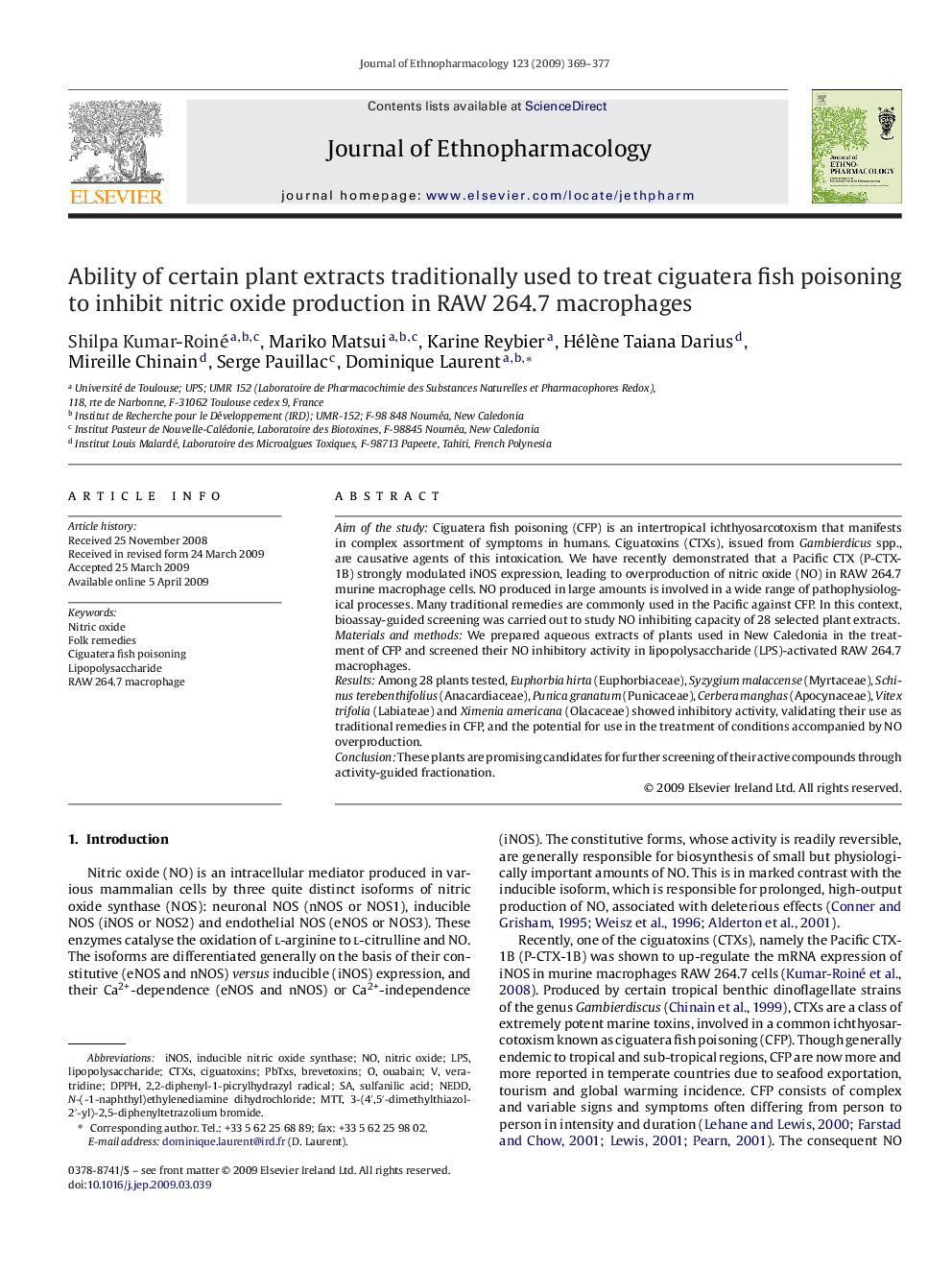| Article ID | Journal | Published Year | Pages | File Type |
|---|---|---|---|---|
| 2546388 | Journal of Ethnopharmacology | 2009 | 9 Pages |
Aim of the studyCiguatera fish poisoning (CFP) is an intertropical ichthyosarcotoxism that manifests in complex assortment of symptoms in humans. Ciguatoxins (CTXs), issued from Gambierdicus spp., are causative agents of this intoxication. We have recently demonstrated that a Pacific CTX (P-CTX-1B) strongly modulated iNOS expression, leading to overproduction of nitric oxide (NO) in RAW 264.7 murine macrophage cells. NO produced in large amounts is involved in a wide range of pathophysiological processes. Many traditional remedies are commonly used in the Pacific against CFP. In this context, bioassay-guided screening was carried out to study NO inhibiting capacity of 28 selected plant extracts.Materials and methodsWe prepared aqueous extracts of plants used in New Caledonia in the treatment of CFP and screened their NO inhibitory activity in lipopolysaccharide (LPS)-activated RAW 264.7 macrophages.ResultsAmong 28 plants tested, Euphorbia hirta (Euphorbiaceae), Syzygium malaccense (Myrtaceae), Schinus terebenthifolius (Anacardiaceae), Punica granatum (Punicaceae), Cerbera manghas (Apocynaceae), Vitex trifolia (Labiateae) and Ximenia americana (Olacaceae) showed inhibitory activity, validating their use as traditional remedies in CFP, and the potential for use in the treatment of conditions accompanied by NO overproduction.ConclusionThese plants are promising candidates for further screening of their active compounds through activity-guided fractionation.
